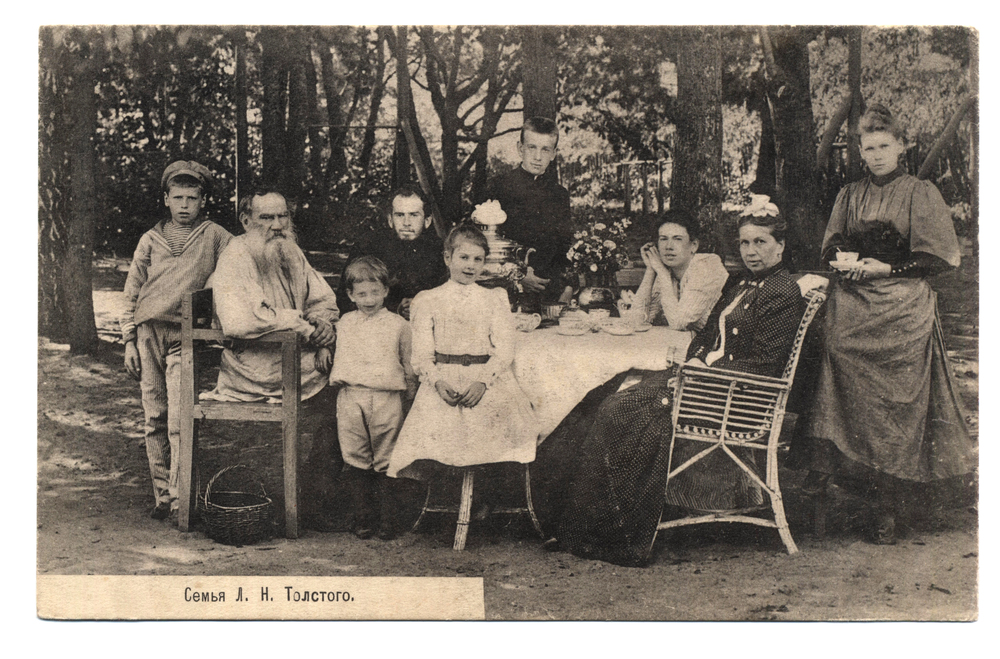A recent Liberty Fund Virtual reading group explored the theme of joy in Leo Tolstoy’s novel Anna Karenina. For Tolstoy, happiness is not a final state that anyone can achieve. It is an ongoing process of discovery full of trial and error. This is similar to the way many economists view markets.
For example, one of FA Hayek’s most famous articles is entitled “Competition as a discovery procedure.” Israel Kirzner of NYU dedicated his career to the idea of markets as a process, and not as an outcome. Economist Rosolino Candela of George Mason University describes Kirzner’s view of markets as ‘a process of discovery, error correction and learning’.
Tolstoy’s characters Anna Karenina They all go through Kirzner-like processes in pursuit of happiness. The title character, the unhappily married Anna, begins an affair with a dashing military officer named Vronsky. Running parallel to their story are Levin, a young man whom Tolstoy modeled on himself, and Ekaterina, more often called Kitty, a debutante who is both kind-hearted and impressionable. The novel follows their lives, along with those of their family members and other people around them.
For many of the characters, part of their happiness discovery process is figuring out where to live. They go back and forth between the city and the countryside, with varying results. The country suits Levin, who has a pastoral-romantic streak; his time in cities reinforces this for him.
Anna and Vronsky are more comfortable in Moscow and St. Petersburg, where they talk in salons, go to the theater and dance at balls, and do not do so well in the countryside. Different people have different preferences, both in markets and in happiness.
However, Anna and Vronsky’s affair is a scandal in the circles of their high society cities. While the male Vronsky is largely accepted again by his old friends, Anna is shunned in a double standard typical of the time and is isolated and lonely. Anna and Vronsky move abroad for a while to escape social disapproval, and then to an estate.
In these environments they try new things, just like an entrepreneur would. While in Italy, Vronsky discovers his artistic talent, although he is disappointed that his skill with the brush is limited to that of a copyist who copies what he sees. A true artist, like the one he and Anna meet and who paints her portrait, can instead create original interpretations and bring out hidden qualities. Vronsky realizes this and puts down his brush.
Anna tries to start a charity school on their estate, but pays more attention to those children than to the daughter she has with Vronsky. She also misses the son she left with her husband.
Just as most new businesses fail, many of these experiments in the pursuit of happiness fall short. Anna’s journey ultimately ends in suicide. Vronsky ends up a broken man, last seen on a train on his way to volunteer in the Serbo-Turkish war.
Levin, the young Tolstoy replacement, is the character whose happiness process is the most successful. That’s because after many failed attempts, he finally discovers moderation. He begins the book as an enthusiastic rural romantic, who idealizes farmers and their way of life. Then he goes in the opposite direction, almost showing disdain for the farmers, who seem incapable of making good decisions on their own.
During this period, Levin is working on a book on political economy, in which he favors an agricultural economy led by experts. He never finishes it and gives it up for other, more satisfying purposes, just as an entrepreneur stops making products that lose money and switches to other products that people value more highly.
A lifelong religious skeptic, Levin is overcome by the end of the book by a religious passion that he finds as unsatisfying as his earlier skepticism. Only at the very end does he find peace by moderating his new zeal to a quiet, contemplative faith.
Levin’s wife Kitty, who tends to adopt the characteristics of those around her, strives for happiness by choosing the right company. After spending an unhappy time in Anna’s orbit and then unhealthy imitation of a young woman she meets at a spa, she feels at her best when surrounded by her family and like-minded friends.
Every character in it Anna Karenina goes through a different discovery process, just like every market player does. Just like in the markets, the process does not go perfectly for everyone Anna Karenina.
Happiness and economics are not the same. But the underlying processes have enough in common: if you understand something about one, you can use it to better understand the other.
Frank Knight, the great University of Chicago economist, wrote in “Ethics and Economic Reform” on page 55 of the collection Freedom and reformthat ‘calling a situation hopeless for practical purposes is the same as calling it ideal’. The problem with perfection is that it cannot be improved. On second thought, this is a depressing thought. Knight wrote about markets, but the same goes for happiness.
Therefore, it is important to view both markets and happiness as processes. No one can be completely happy, just as markets can never achieve perfect competition. But in both cases there is always room for improvement, and always room for optimism.
At its core, economics is not about money, efficiency or maximizing utility. It’s about how people find ways to get along with each other – and how they don’t. No wonder its insights apply so well to the pursuit of happiness, which, as Tolstoy describes, works in a similar way.
Ryan Young is a senior economist at the Competitive Enterprise Institute.

